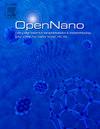Effect of unsaturated fatty acids on the topical delivery of caspofungin ufasomes: In vitro/ Ex vivo evaluation and anti-fungal study against Candida albicans
Q2 Pharmacology, Toxicology and Pharmaceutics
引用次数: 0
Abstract
Cutaneous candidiasis presents a considerable challenge in today’s medical landscape, particularly for patients with weakened immune systems or chronic illnesses. As antifungal resistance continues to rise, the development of new topical therapies has become increasingly urgent. Caspofungin (CSP), an echinocandin antifungal, exhibits fungicidal activity against Candida species by inhibiting β-1,3-d-glucan synthase, a key enzyme in fungal cell wall synthesis. However, its poor stability and requirement for intravenous administration limit its clinical application. To address these limitations, novel formulations such as ufasomes (unsaturated fatty acid vesicles) have been developed to enhance caspofungin's stability and skin penetration. In this study, ufasomes were prepared using three oils: oleic acid, linoleic acid, and palmitoleic acid, along with caspofungin and cholesterol, using the thin-film method. Among the formulations, F34, composed of 500 mg palmitoleic acid and 10 mg cholesterol, exhibited promising results. It demonstrated a particle size (PS) of 87.65± 2.65 nm, a polydispersity index (PDI) of 0.22 ± 0.00, a zeta potential (ZP) of -7.46± 0.4 mV, a drug content of 97 ± 1.34 %, and an encapsulation efficiency (EE %) of 92 ± 0.82 %. Furthermore, the optimized formulation F34 showed a sustained drug release of 81.5 ± 0.4 over 600 min (10 h) compared to 100 %±0.01 of caspofungin. The permeation of F34 in 600 min (10 h) was 94 %±0.81 compared to the caspofungin 87.85 %±0.85. The antifungal activity showed that the inhibition zone diameter, MIC and MBC for caspofungin-loaded ufasomes was 29 mm±0.8, 0.153 μg/mL±0.01, 0.283 μg/mL±0.02 compared to 25 mm±0.8, 0.214 μg/mL±0.01, 0.409±0.01 for pure caspofungin. The histopathological study revealed a positive response towards the optimized formulation. In conclusion, this optimized formulation holds potential as a novel therapeutic approach for treating topical fungal infections.

不饱和脂肪酸对caspofunins ufasomes局部递送的影响:体外/体外评估和抗白色念珠菌的研究
皮肤念珠菌病在当今的医疗领域提出了相当大的挑战,特别是对于免疫系统较弱或慢性疾病的患者。随着抗真菌耐药性的持续上升,开发新的局部治疗方法变得越来越紧迫。Caspofungin (CSP)是一种棘白菌素抗真菌药物,通过抑制真菌细胞壁合成的关键酶β-1,3-葡聚糖合成酶,对念珠菌具有杀真菌活性。但其稳定性差,需要静脉给药,限制了其临床应用。为了解决这些限制,新的配方如不饱和脂肪酸囊泡(不饱和脂肪酸囊泡)已经被开发出来,以提高caspofunins的稳定性和皮肤渗透性。本研究以油酸、亚油酸、棕榈油酸三种油类为原料,与caspofunins、胆固醇为原料,采用薄膜法制备ufasomes。其中,由500 mg棕榈油酸和10 mg胆固醇组成的F34具有良好的效果。其粒径(PS)为87.65±2.65 nm,多分散指数(PDI)为0.22±0.00,ζ电位(ZP)为-7.46±0.4 mV,药含量为97±1.34%,包封率(EE %)为92±0.82%。优化后的F34在600 min (10 h)内的缓释量为81.5±0.4,而卡泊芬素的缓释量为100%±0.01。F34在600 min (10 h)内的通透率为94%±0.81,而caspofungin为87.85%±0.85。抑菌活性表明,载caspofunins的抑菌带直径、MIC和MBC分别为29 mm±0.8、0.153 μg/mL±0.01、0.283 μg/mL±0.02,而纯caspofunins的抑菌带直径、MIC和MBC分别为25 mm±0.8、0.214 μg/mL±0.01、0.409±0.01。组织病理学研究显示了对优化配方的积极反应。总之,这个优化的配方具有潜力作为治疗局部真菌感染的一种新的治疗方法。
本文章由计算机程序翻译,如有差异,请以英文原文为准。
求助全文
约1分钟内获得全文
求助全文
来源期刊

OpenNano
Medicine-Pharmacology (medical)
CiteScore
4.10
自引率
0.00%
发文量
63
审稿时长
50 days
期刊介绍:
OpenNano is an internationally peer-reviewed and open access journal publishing high-quality review articles and original research papers on the burgeoning area of nanopharmaceutics and nanosized delivery systems for drugs, genes, and imaging agents. The Journal publishes basic, translational and clinical research as well as methodological papers and aims to bring together chemists, biochemists, cell biologists, material scientists, pharmaceutical scientists, pharmacologists, clinicians and all others working in this exciting and challenging area.
 求助内容:
求助内容: 应助结果提醒方式:
应助结果提醒方式:


